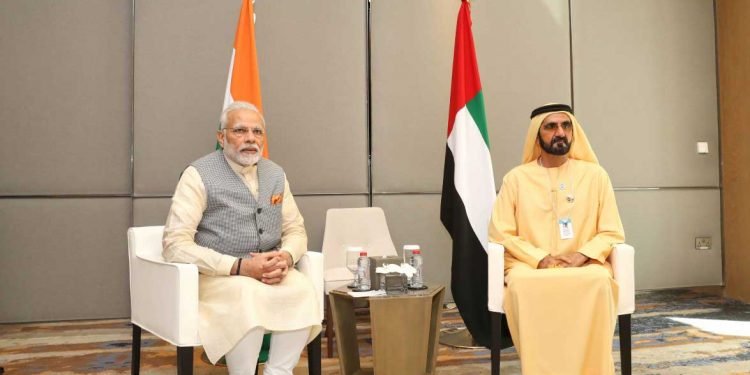Belgium (Brussels Morning Newspaper)In a landmark agreement, the UAE and India have signed a broad economic pact to boost bilateral trade and investments while laying out strategic benefits for the future. The agreement was inked in the presence of Sheikh Mohammed bin Rashid Al Maktoum, Vice President and Prime Minister of UAE and Ruler of Dubai, and Narendra Modi, Prime Minister of India. The first trade agreement signed by India in over a decade, it focuses on key sectors for trade, job growth, trade protections and conducting business between the two countries. It differs from past agreements, given its breadth of scope.
Relations in the past
The new agreement builds on past partnership agreements between the UAE and India. The two countries have had a strong economic relationship for many years. The UAE is India’s third-largest trade partner. As far back as 2016, bilateral trade totaled 52.68 billion dollars. And while this agreement will further strengthen ties between the two countries, it is not the first of its kind.
In February 2002, the two countries signed an agreement on economic cooperation. Four years later, in January 2006, they agreed to expand trade ties and increase investments.
Then, in 2010, the UAE became India’s top investment destination in the Arab world with cumulative foreign direct investment totaling 25 billion dollars. Sectors that have seen major FDI inflows from UAE include construction, power, real estate, and pharmaceuticals.
UAE investments in India are also diverse, with interests spread across a wide range of sectors including oil and gas, construction, information technology, engineering, and manufacturing. For example, leading UAE companies active in India include DP World, Emaar Properties, Etihad Airways, and the Abu Dhabi National Oil Company (ADNOC).
While past agreements were heavily focused on the trade of goods, the latest agreement is well-rounded with the addition of safeguards and fresh talks of e-commerce.
Three key provisions
The new agreement includes the following provisions:
Boosting bilateral trade by eliminating duties – The UAE and India will eliminate duties on approximately 80% of products including textiles, leather, jewelry, automobiles and pharmaceuticals to name a few.
Safeguards to protect against re-exports – Rules of export country origin are bolstered to protect against other countries misuse of the agreement to skirt tariffs.
India warms to the idea of e-commerce talks – A section of the agreement addresses digital payments, exchange of digital information, intellectual property rights, consumer and personal data protections.
Key benefits
Both countries expect to benefit from the agreement as follows:
The focus on job creation – India expects the agreement will generate an increase in jobs across several industries including footwear, pharma, automobile, and medical devices. The UAE promised to create 140,000 jobs over the next ten years.
Anticipated trade increase – For both countries, it is expected that trade will increase to over 100 billion dollars in the next five years and create business opportunities in many sectors.
Greater emphasis on cooperation – Earlier agreements were more focused on trade and investments. The new agreement places greater emphasis on cooperation between the two countries in key sectors. Both countries are slowly building similar alliances with other trade partners, recognising the competition from China.
Broader scope – The new agreement is broader in scope than those previous and focus on a wider range of sectors. Past agreements focused heavily on trade and the oil and gas sector. The new agreement recognises the benefits of strategic growth not only in trade but also in job creation, ways of conducting business and establishing protections.
The agreement take effect in May of 2022.




